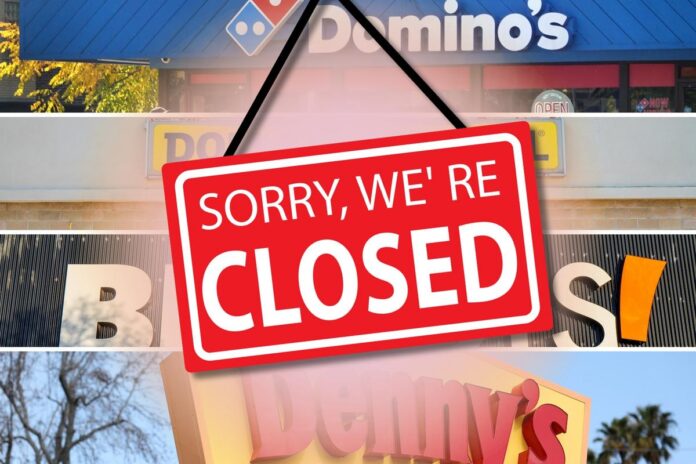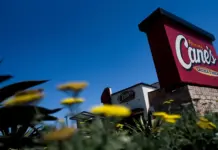The year 2025 has turned out to be an unfortunate period for a lot of iconic restaurant chains in the United States as result in the Major U.S. Restaurant Chains Closing in 2025. With increasing costs of operations, customers’ new patterns of behavior, and a lethargic economic environment, many of the famous brands have been forced to close hundreds of branches across the country. From family dining spots to fast casual favorites, the pending closures paint an unnerving picture for food service. Some of the brands are reorganizing and cutting their footprint, while others are on the verge of being obliterated.
Red Lobster: Sinking in Deep Waters
Red Lobster is on the top of US Restaurant Chains Closing list. Once a popular destination for cheap seafood and cheddar biscuits, Red Lobster is still in the struggle in 2025. Attempts in the past to reinvent its menu and customer experience have not arrested the situation, the chain has announced the closure of over 100 stores across the country this year. Poor management decisions, the high cost of food due to inflation, and sliding dine-in traffic are cited as the reasons by the analysts. The shutdowns cover major states, including Florida, Texas, and Ohio. Despite the insistence by the brand that it is not leaving completely, its national level is rapidly reducing.
Also read: Tory Lanez Stabbed 14 Times in California Prison
TGI Fridays: No Longer the Life of the Party
Another victim this year is the TGI Fridays in the list of Major U.S. Restaurant Chains Closing in 2025, a chain which was synonymous with casual dining and happy hour. Famous for its appetizers and its lively atmosphere, the company said that it will be shuttering nearly 40% of its U.S. stores. The brand’s CEO gave the reasons for the decision as the shortage of labor, aging décor, and changing behavior of the customers. A rebranding effort is currently in play, but plenty of long-time customers view this as the start of something much worse for the once-popular chain.
Applebee’s: Shrinking Its Footprint
Even the giant Applebee’s, a household name in American dining, is shrinking. Its parent company, Dine Brands, has plans to shut down dozens of underperforming locations by the end of 2025. The closures are targeting older, low-traffic markets in suburban and rural areas. In the urban areas, however, the brand is trying out smaller “fast-casual” concepts. This hybrid strategy will be used in order to make Applebee’s remain current amidst the times where speed and convenience play decisive roles.
Boston Market: A Legacy Brand in Decline
Not too long ago, Boston Market was once a pioneer in the rotisserie chicken space, but now it struggles to stay in business. The chain closed over 50 stores in 2025, as it faced continuous legal battles, unpaid vendor contracts, and unpaid wages of the employees. A poor image and little appetite for risk among the franchisees, Boston Market’s future looks shaky. The chain back then was an icon in suburban shopping plazas, but is now largely out of mainstream consciousness for the younger consumers.
Hardee’s and Carl’s Jr.: Struggling Siblings
The market saturation and lack of foot traffic have affected both Hardee’s and Carl’s Jr., run by CKE Restaurants. Hardee’s is closing restaurants in the Southeast, while Carl’s Jr is pulling away from the West Coast. The parent company has announced that it is going to concentrate on smaller, but more profitable locations and digital ordering. Nevertheless, true customers of the brands are discouraged by the closing of stores in small towns.
Steak ‘n Shake: A Model That No Longer Works
One of the much-loved chains for its burgers and milkshakes – Steak ‘n Shake, has extended its shuttering wave into 2025. The year has seen over 60 locations close, mainly because of a failed attempt at moving from table service to a fast-casual approach. Old machinery, bad and rather rude customer service, and a shortage of staff were among such stores’ flaws. Although it appeals with a nostalgic note, the brand is struggling to keep up with newer and more efficient burger chains.
Pizza Hut: Fewer Huts, More Takeout
Although Pizza Hut is not fading away, it is changing course. The chain has closed hundreds of dine-in outlets in 2025 as it shifts to delivery and carryout. The full-service restaurants run by the company were found to be expensive to maintain and less attractive to the current on-the-go customers. Pizza Hut’s parent company, Yum! Brands are investing again in mobile apps and AI-driven ordering to catch up with Domino’s and Papa John’s, which have performed better than it in digital engagement.
Cracker Barrel: Family Dining Faces Pressure
Even Cracker Barrel, known for its Southern charm and comfort food, is feeling the heat. The company has announced the closure of several stores in slower-growth areas and is reevaluating its business model. With its reliance on road-trip traffic and older demographics, Cracker Barrel is working to modernize its appeal by adding new menu items and tech-enabled ordering. However, analysts warn that the brand could be in for more cuts if consumer demand doesn’t rebound.
Subway: Still Contracting
After years of rapid overexpansion, Subway is continuing its strategy of closing unprofitable locations. In 2025, it shut down over 500 stores, part of a plan to rebuild the brand’s reputation and focus on higher-traffic locations. Subway has also been investing in menu upgrades and store redesigns. While it remains the largest fast-food chain by location count in the U.S., its footprint is significantly smaller than it was a decade ago.
Friendly’s: Saying Goodbye in More Towns
Friendly’s, the New England-based chain known for ice cream and diner fare, has been gradually disappearing. This year, the company closed another 30 locations, reducing its total count to under 100. Changing eating habits, real estate costs, and competition from newer chains have all taken a toll. While some franchises remain profitable, Friendly’s national presence is now a fraction of what it once was.
Also read: Jeep Gladiator Kestrel Revives the Classic Mail Jeep
Conclusion
2025 has been a sobering year for the restaurant industry in the U.S. Major U.S. Restaurant Chains Closing we’re seeing are not temporary—they are part of larger plans to redefine or exit certain markets altogether. As consumers continue to favor speed, convenience, and tech-savvy experiences, legacy brands will need to innovate or risk becoming the next name on a growing list of closures.








